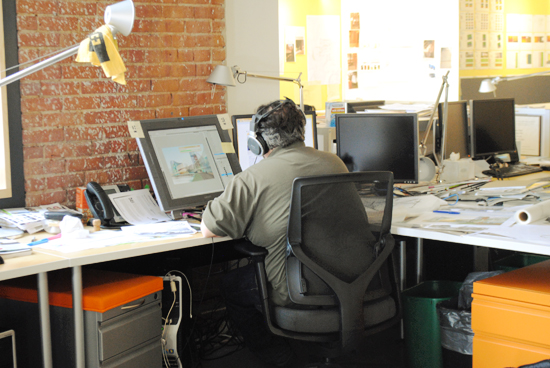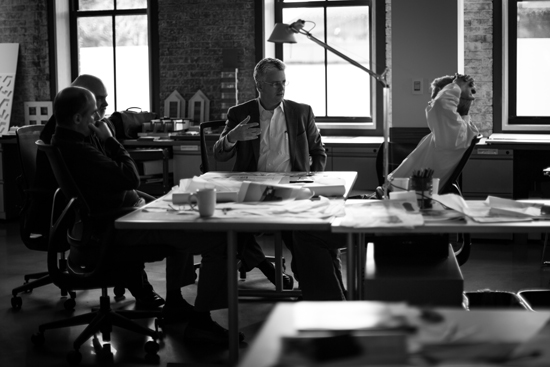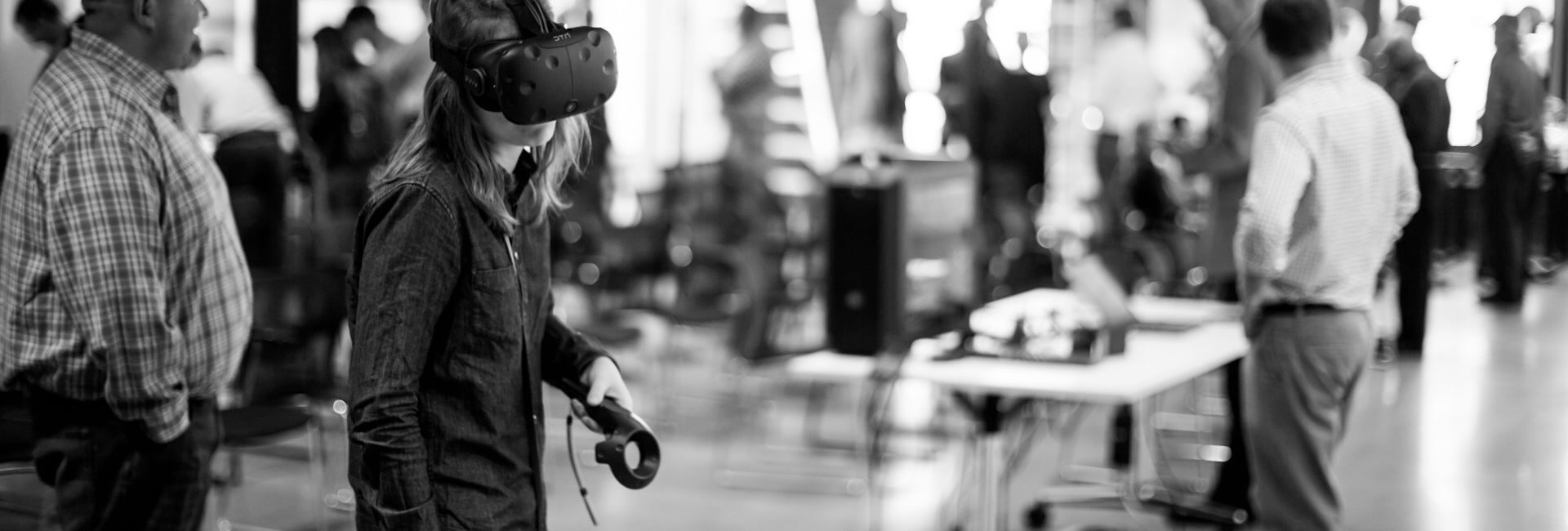
A recent article in Metropolis Magazine generated some buzz, around the PAYETTE office. Titled “The role of Software for Birthing Architecture 3.0,” the author stated that architectural design is dominated by software yet, it is falling short as new computer applications and devices are created every day. He then questioned, “Is architecture able to embrace this change fast enough to advance the future of building design, or will it lag behind?”
For creative designers the use of technology and software is essential. The need for it is clear when addressing the complex nature of building design today. However, the question follows: “Do designers require all of this technology to be creative?” I venture to answer, no. Recent efforts here support the premise that the technology is a vital component in the design process but it is the design-brain that runs the show, not the technology. In short, architectural design doesn’t need to keep pace with technology. Instead, technology needs to keep pace with architectural design.
Recent efforts have driven home this point. PAYETTE had the good fortune to participate and in a challenging design competition. After assembling a team and weeks of investigation and exploration, the team generated a great deal imagery associated with the spirit, massing, and materiality of this collection of buildings. Imagining the concepts was important. When the effort neared completion, the team sought to improve their ideas and representations of their work.

The team pushed the limits of what could be done with a very challenging and dense site. Rolls of trace were stretched across tables, those sophisticated 3D images of the future project were under-layed, over-layed, drawn on, pinned up, discussed and drawn on again. With the hard work of the design team (including those dedicated to the technology of imagery), a new vision was realized; a vision that won the attention of a client who was looking for a dynamic new statement for their site. It was that human centered process, in its fitful, sometimes halting nature that the technology supported. It was not the technology that architecture had to keep up with – it was truly the other way around.
This scene is played out repeatedly here at PAYETTE – whether it’s a master plan, building design, detailed renovation of a laboratory or patient room. The technology used to support the process of design is essential. Our designs have to respond to new and evolving environmental design criteria and technology is there to support the effort. The convergence of ideas and technology is essential in testing the qualities of the three-dimensional world we propose. It is in that capacity that technology needs to keep pace with the architecture and is why technology has evolved at such an incredible pace.


